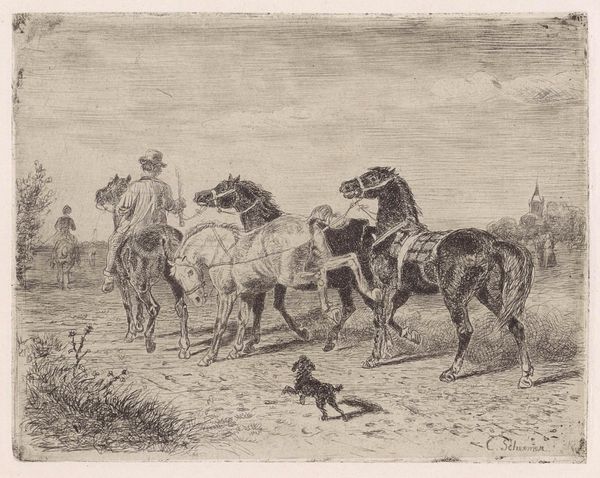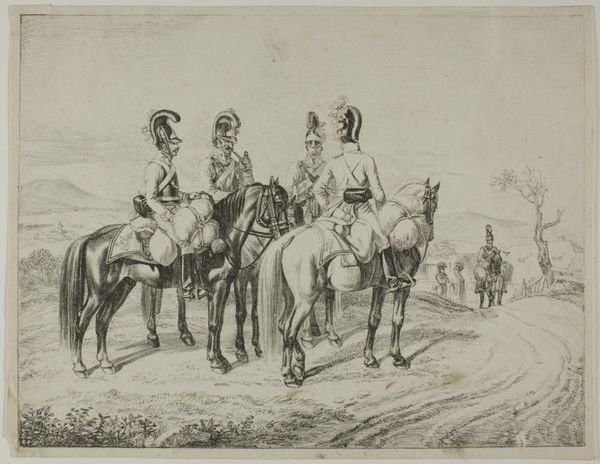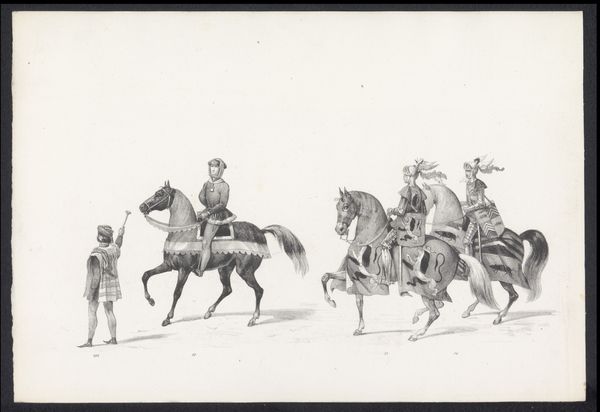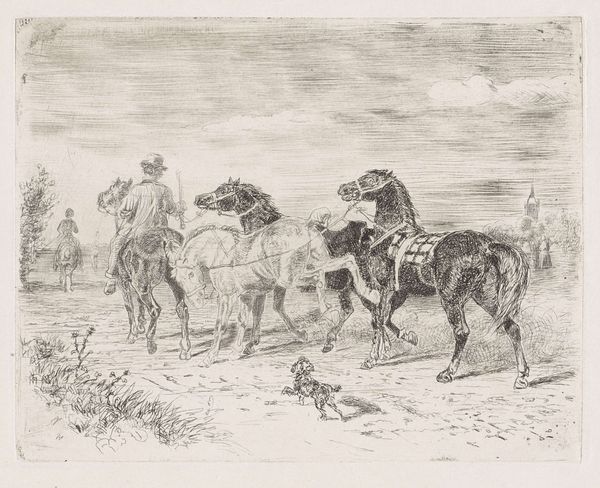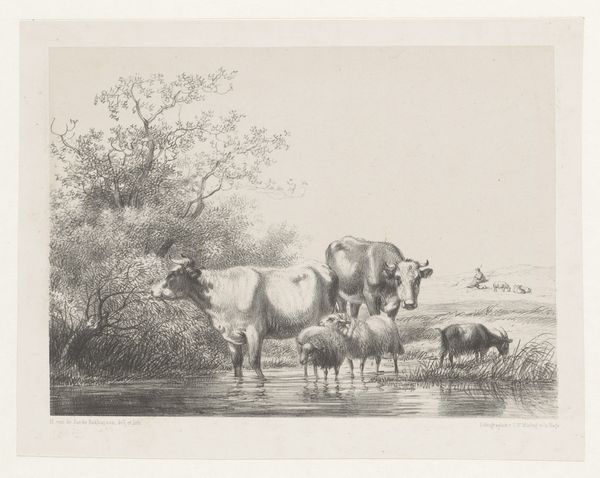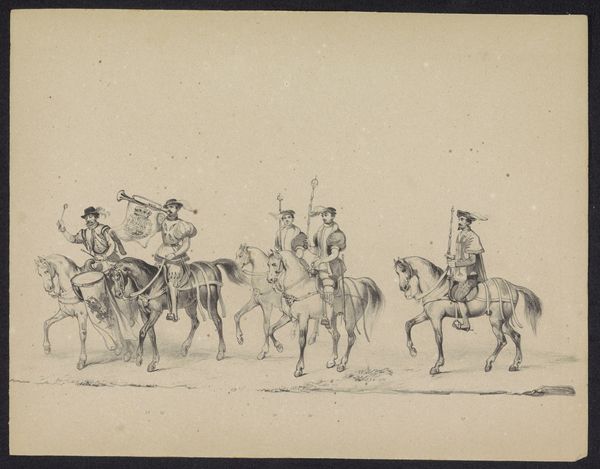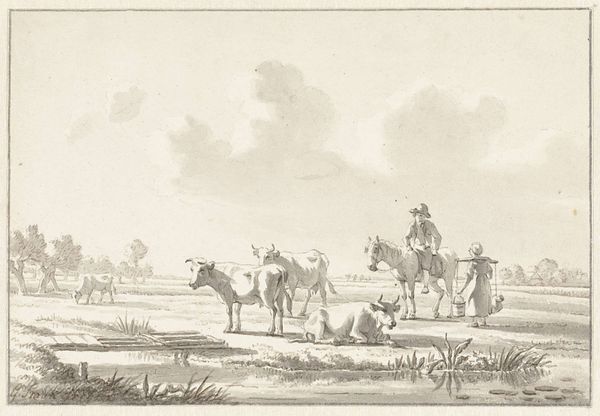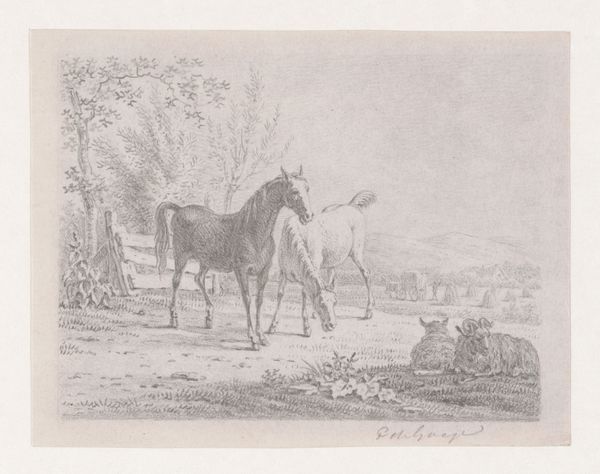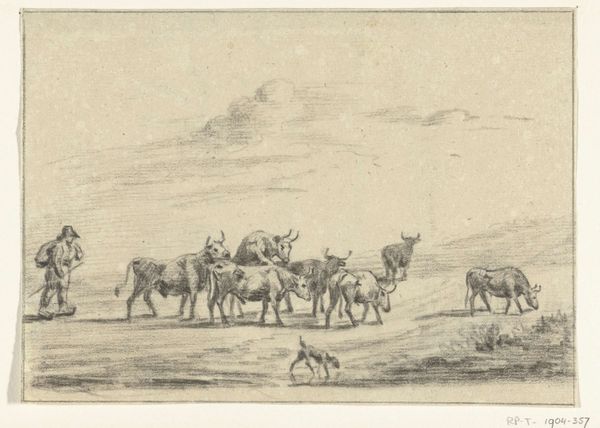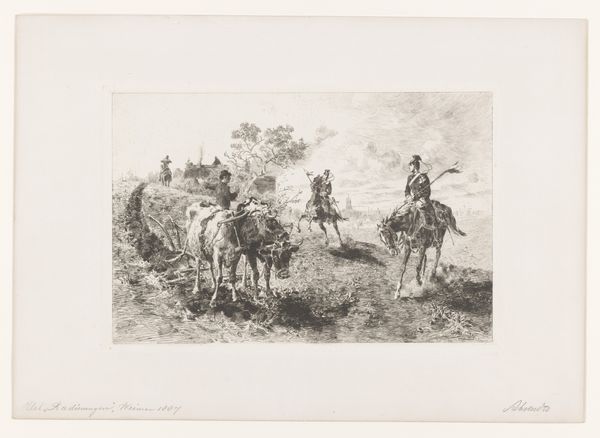
drawing, watercolor
#
drawing
#
landscape
#
figuration
#
watercolor
#
watercolour illustration
#
genre-painting
#
watercolor
Copyright: Rijks Museum: Open Domain
Editor: This watercolor drawing, “Ruiters, lopende en zittende figuren bij een muur,” created around 1859-1860 by Willem de Famars Testas, strikes me with its muted tones and almost dreamlike quality. It depicts figures and animals against a backdrop of a wall. What stands out to you when you examine the means of its production? Curator: The deliberate use of watercolor, a medium easily transported and rapidly applied, speaks to a specific mode of artistic labor tied to the era's increasing travel and documentation. The swift, almost sketch-like application hints at the artist capturing a fleeting moment. Consider the materiality of watercolor itself - pigment suspended in water, reliant on the absorbency of the paper. How does that affect our reading? Editor: I suppose the quick, almost journalistic, quality makes sense, given its setting and era. It does feel almost documentary in a way. What does this artistic choice communicate about his perception, or the intended audience? Curator: Perhaps this relates to a burgeoning European fascination with the "Orient" as a source of artistic inspiration, but framed within the realities of colonial trade and labor. Watercolors allowed artists to create images that were easily reproduced and disseminated, feeding into a market hungry for depictions of "exotic" lands. Is he then simply depicting figures or is he subtly commenting on the socio-economic system that places these individuals within a market of labor and exchange? Editor: That adds a really interesting layer. So the apparent simplicity of the medium is deceiving; it's intertwined with complex historical and social forces. Curator: Exactly. It compels us to consider not only what is depicted but *how* it is depicted, the artistic process becoming a crucial part of the narrative. And we need to think about who it's made for – and how these kinds of artworks may fuel inequalities. Editor: This conversation made me appreciate the historical and social context in ways I never thought of before when looking at it from an aesthetic point of view. Thank you. Curator: The process matters as much as the product, a critical approach. We shouldn't divorce the artist's materials and methods from the wider forces shaping its creation and circulation.
Comments
No comments
Be the first to comment and join the conversation on the ultimate creative platform.
